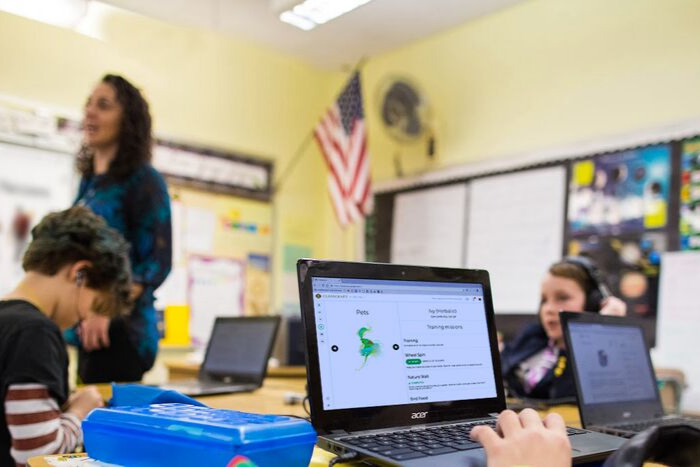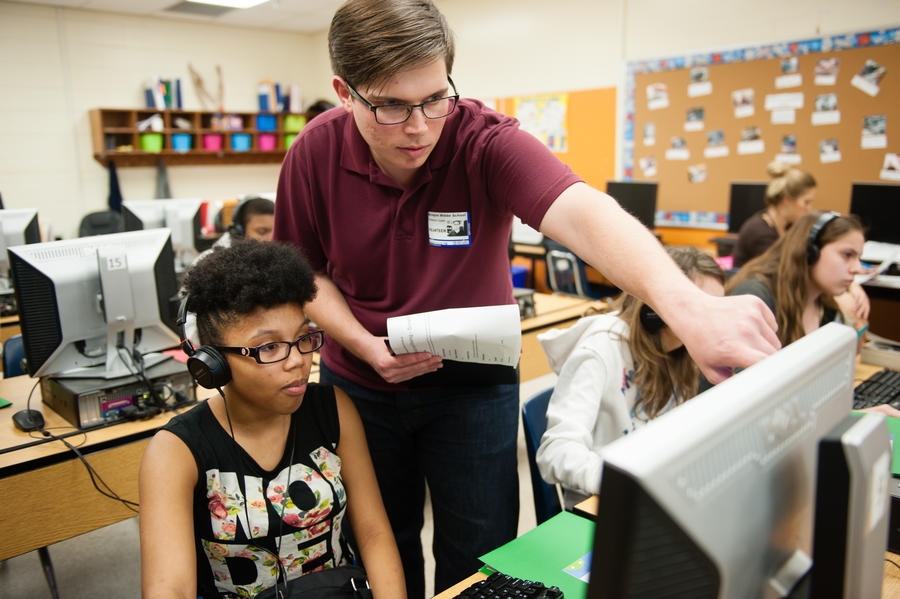As teachers, we’re always looking for the next big thing to help our students succeed in school. We’re constantly looking for new ways to encourage our kids while reading, writing, playing, and socializing. When it comes to teaching children with disabilities, this can get even more tricky. Assistive technology includes minor modifications to everyday classroom tools that allow children with disabilities to succeed. Assistive technology also offers the benefit of building on students’ skills while also familiarizing them with the technologies that they will be able to use for success in the real world.
What is assistive technology?
Assistive technology is anything used to improve the capabilities of people with disabilities. These tools include a variety of no-, low-, and high-tech tools ranging from free to fairly inexpensive. These tools are easy to access and understand for most students and have shown they improve classroom morale and grade-point averages.
When you choose to incorporate assistive technology into your classroom, you are deciding to make sure that each student has an equal opportunity to learn. For a child with disabilities, your classroom may be one of the only places they feel equal with those around them. You’ll be able to make sure your kids are feeling supported and understood. Not only will this improve their grades and keep them engaged while learning, but it will also make a difference in their lives and how they see the world around them.
13 ways to incorporate assistive technology in the classroom

1. Classcraft
Classcraft is a fun and inventive way to encourage positive behaviors in your classroom while meeting your students’ unique needs. This assistive technology tool incorporates video game elements that kids enjoy while the “game” itself is played through the interactions in the classroom.
The assistive elements can be seen in Quests, which turn your existing curriculum into personalized learning adventures. Students can go at their own pace, you can add rich media like video, audio, images to help students learn concepts. Classcraft can also be used to reward students for completing behaviors that you specify. You can choose to award your class with points they can use to level up their characters and learn new special abilities within the game. This is a great way to bring fun into the classroom while focusing on reinforcing positive behaviors that you want to focus on.
2. Closed captioning for visual media content
Closed captioning isn’t just for students with hearing disabilities — it also offers the benefit of helping students to recognize the relationship between spoken and written words. This is an example of a free option that you can use to incorporate assistive technology into your classroom. All you need to do is use the commands on your remote to trigger it. There are often options to make the text larger, as well, which benefits students with difficulty reading small text.
3. Variable speed recorders
Students with memory problems or autism might have trouble focusing and remembering things that you talk about in class. Additionally, it may be difficult for them to process what you are teaching due to the speed or pitch of your voice. Variable speed recorders offer a great solution to these problems. They allow students the chance to play the day’s lecture back as slowly as they like and at a tone they can understand. If they have difficulty understanding a portion, they can play it back repeatedly or use the audio as a reference when asking you for help.
4. Timers
Many students with disabilities have trouble managing their time in the school day. You can use timers in a variety of ways to help your kids overcome this issue. Firstly, they might help a student to prepare for when it is time to switch tasks. This will greatly reduce or eliminate the stress placed upon them when it is time to shift gears.
On the other hand, timers are an effective way to be sure your kids aren’t spending too much time on one task. You can allow as much time as you think is necessary. If you notice some children are not meeting the bar you have set, you will now have insight into who you need to focus more on.
5. Reading guides
Reading guides are a great solution for kids that have trouble focusing on the written word. These transparent guides are often dyed in bright colors and help to highlight the line in the book to focus on. They are easy to move around and will assist the student in dedicating their attention only to the line they are working on. This is a low-tech and extremely inexpensive option for your classroom; you’ll find that it makes a huge difference!

6. Seat cushions
Students with sensory disabilities often struggle to remain in their seat, which affects their ability to learn. Seat cushions often offer enough mobility for these students to bounce and move around without leaving their chair. You’ll find that students with these problems will be far better engaged and willing to learn with this accommodation. Consider combining it with other tools for the greatest benefit!
7. Modified calculators
Math can be a particularly tricky subject for many students with disabilities. Calculator screens are often small and can be hard to read for those with vision issues. For kids with dyslexia or other organizational disabilities, the order of the numbers themselves can create issues. There are many modified versions of traditional calculators designed to help with these problems. For example, there are talking calculators that help students check that they’re typing the correct numbers into the device. There are also calculators with enlarged screens and text selections that make it easier for those with vision disabilities to see.
8. Alternate input devices
There are a wide variety of alternate input devices that you can use to incorporate assistive technology into your classroom. Some of these include touch screens, special color-coded keyboards, and modified joysticks that allow students to control with different parts of their bodies, like their feet or chin. This is a great way to give everyone a chance to participate in class activities in their own way. It will teach kids with a wide variety of disabilities that they can do just about anything anyone else can with minimal modifications.
9. Speech-to-text options
Speech-to-text is perfect for students with dexterity problems or for children who are blind. They give students a way to respond with their voice then convert their comments into text. There are software programs that can speak back, assisting with any potential errors. Use this option to complete writing assignments or even to search the web. The opportunities this offers to children are endless!
10. Noise-eliminating headphones
Noise-canceling headphones are a great option for children with sensory issues, especially when the environment of the classroom is too overwhelming for them. The student gets to enjoy the benefit of a quiet working environment without ever leaving the classroom. This helps to prevent kids from getting overstimulated or distracted in a noisy classroom.
11. Audiobooks and publications
Children with vision disabilities benefit greatly from this assistive technology tool. Audiobooks allow students to explore writing when they wouldn’t otherwise be able to see it. Use headphones for independent use or listen aloud with the entire class. The process of having a book read to them creates a relaxing environment for younger children in particular. This is a great way to lead up to lunchtime or even to begin a class!
12. Laptops and tablets
These are great tools for children who have handwriting or dexterity issues. Word processing programs allow children to generate notes that are easier for them to review. Additionally, for kids with speech issues, there are apps and programs that can convey emotions or needs. These text-to-speech programs are easy to learn and make a big difference in understanding the needs and emotions of children who wouldn’t otherwise be able to convey these things.
13. Graphic organizers
Graphic organizers help assist students in organizing their thoughts in a visual way. They work by helping students to map out the task at hand. This is most helpful when used with writing assignments, but it can adapt to a variety of other situations.

Tools that can help every student succeed
Children with disabilities don’t always have the easiest time in the classroom. The good news is that there are many modifications you can make to your lessons that will help each and every student to succeed. When you choose to invest in technologies that will help your students learn, you’ll help these kids to grow into more resourceful and successful adults. School will no longer be a source of stress or resentment for them because each and every child will feel accommodated and able to learn and grow alongside their classmates.
Photo: Google Edu
Technology Integration


